January 15, 2015
Taming Runoff, Gluten Free Caesar Salad, Habitat Meets Art
We love the rain but not when it threatens our homes and erodes our gardens! This week, Roc + Solid Land Designer Elizabeth McGreevy joins Tom to wrangle rushing rainfall and keep it on site.
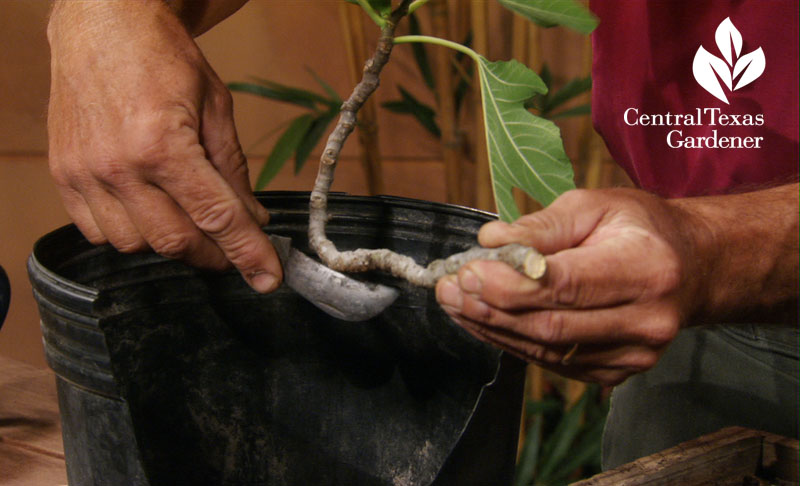
Elizabeth explains a few simple things we can all do. One is piling stones under down spouts to slow things down.
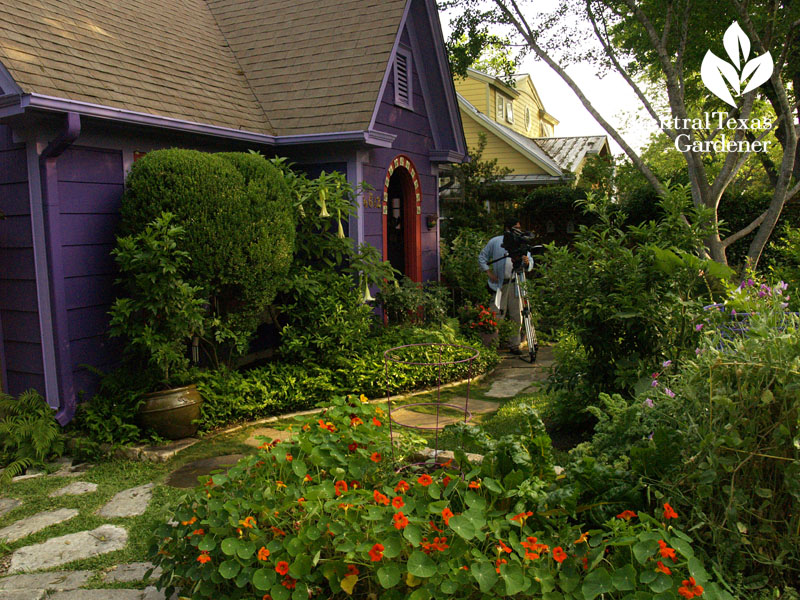
Another: add pathway slabs, raised above the soil, to tame water into pervious gaps.
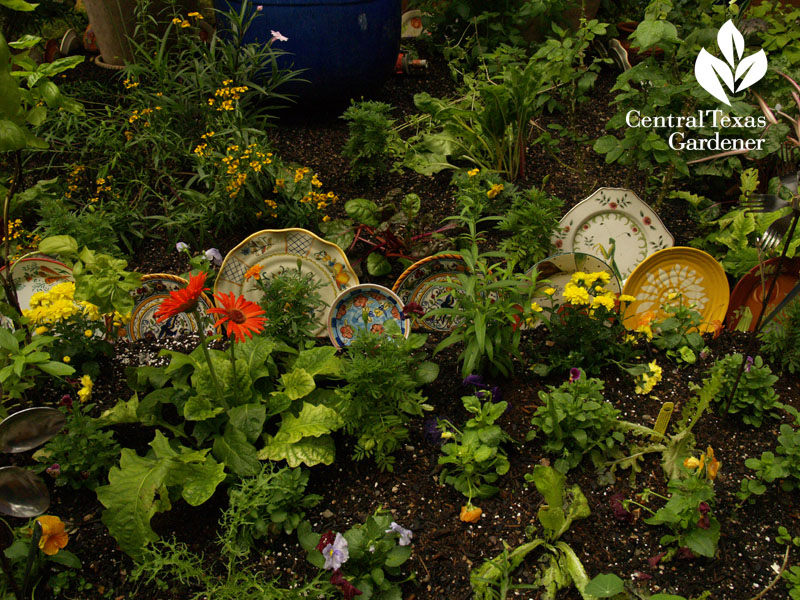
She tells how to make cuts into existing sidewalks and driveways to trickle water into gravel gaps. Also to divert sheeting action, avoid mortar when building new sidewalks and consider a charming driveway ribbon.
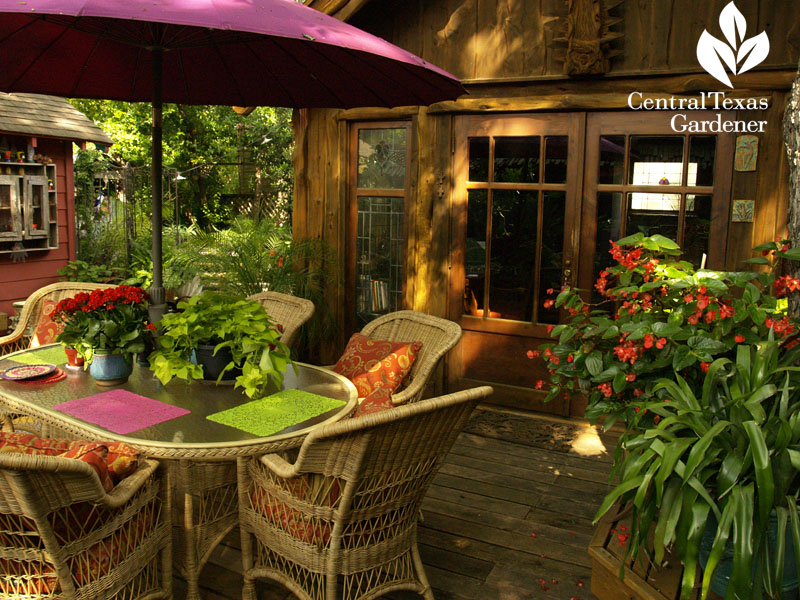
In another design, she arranged concrete “curbs” in stylish food and ornamental beds to retain water on a gentle slope. The bordering pathways are crushed ¼” minus limestone (aggregate used in asphalt). Over road base, she lays 1” of the limestone, creating an alkaline base unfavorable to weeds.
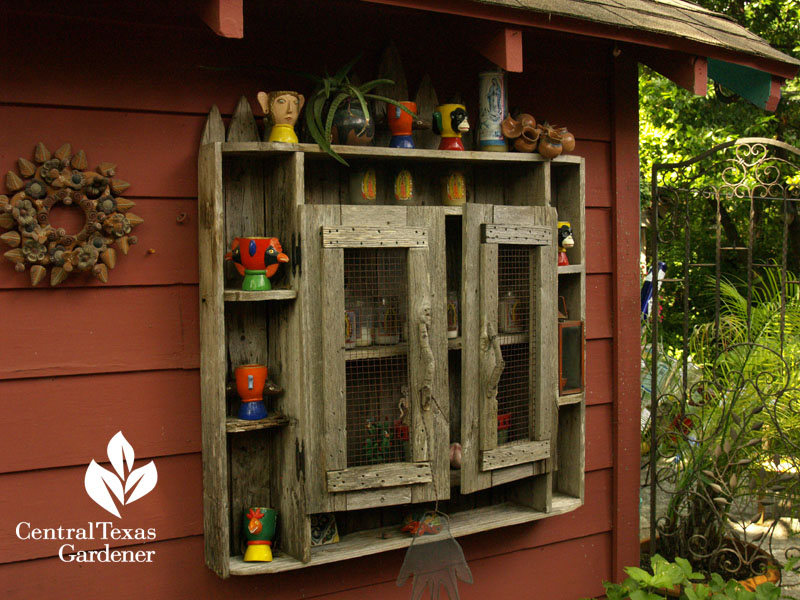
Rain gardens (shallow depressions surrounded by berms) are an easy way to capture and retain water. Watch now!
Native sedges are good rain garden candidates, since they can take dry and moist conditions. Daphne explains how to grow Texas sedge (Carex retroflexa var. texensis), CTG’s Plant of the Week. In one spot in my garden, native Gulf penstemon popped up to join it.
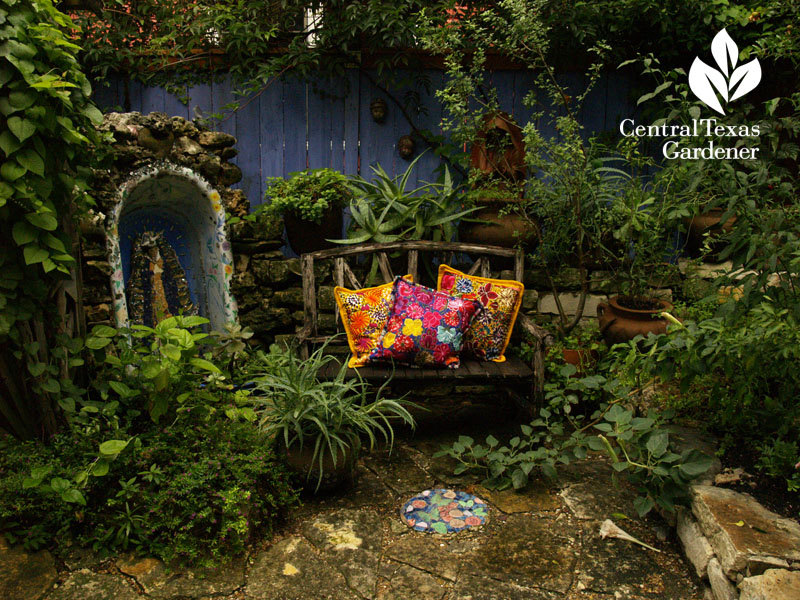
Elizabeth McGreevy used ‘Scott’s Turf’ sedge as a low-maintenance textural frame against a patio, paired nearby with silver ponyfoot (Dichondra argentea).
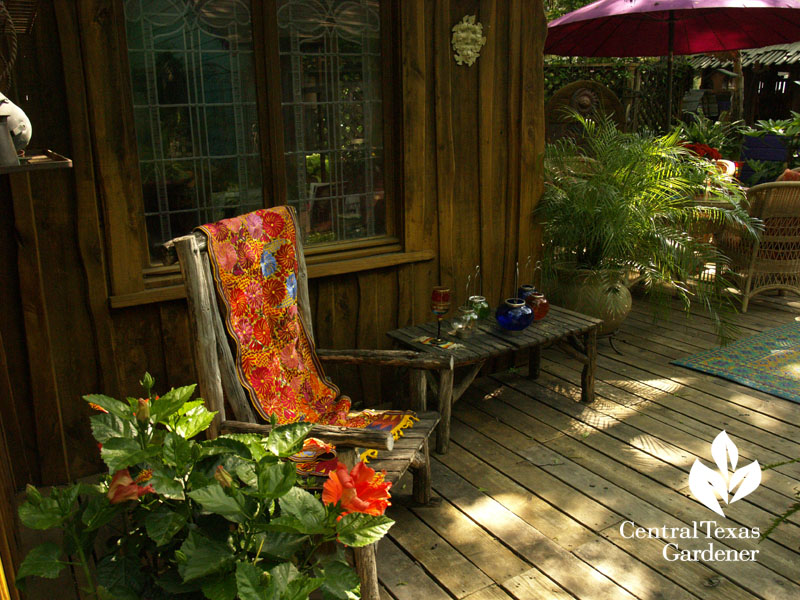
‘Scott’s Turf,’ named for horticulturist and author Scott Ogden, derived from native sedges in a form of Carex retroflexa.
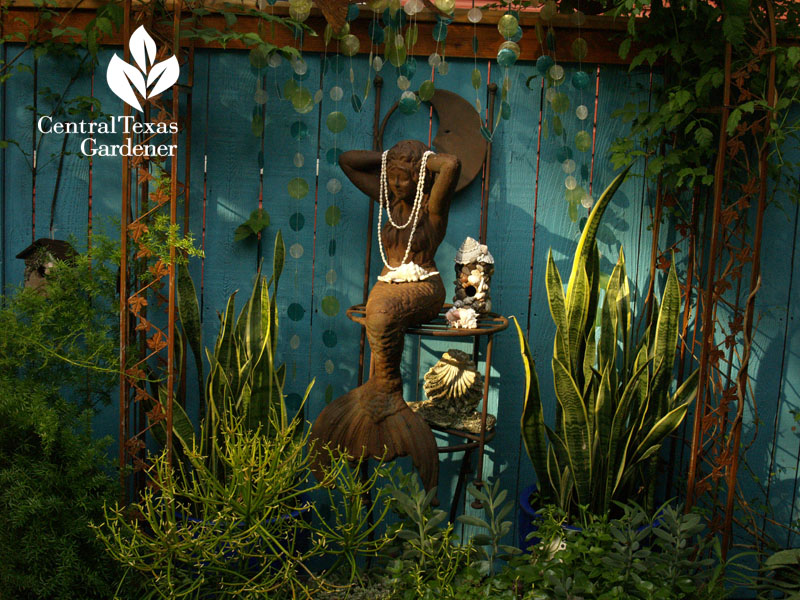
In landscape architect Christy Ten Eyck’s garden, sedges and bamboo muhly dot terraces of limestone slabs and decomposed granite to slow down and retain water.
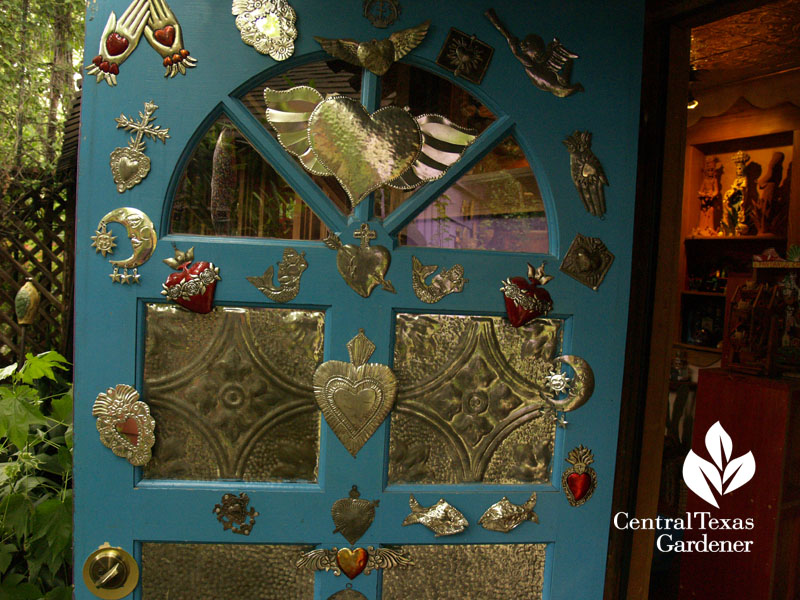
To conserve water, many of us are growing cactus and succulents for the first time. Daphne answers: What’s the difference between cactus and succulents?
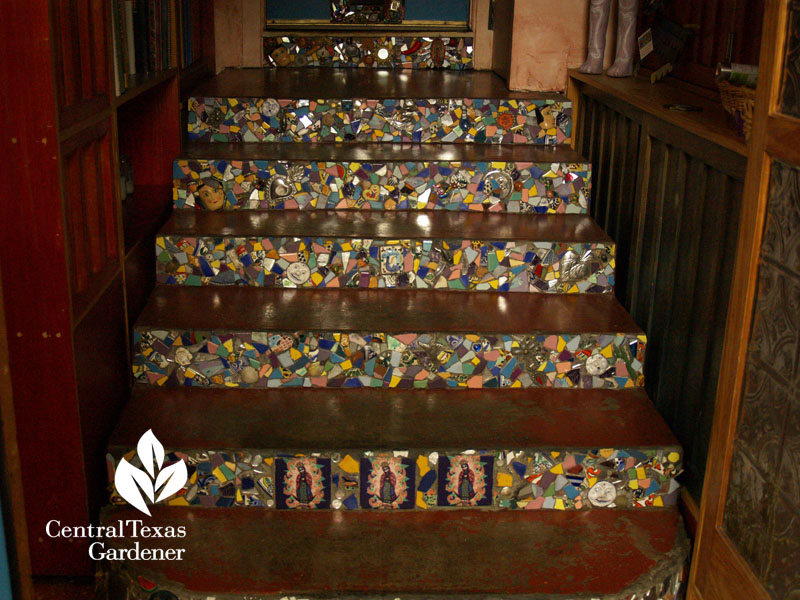
Short version: All cacti are succulents but not all “succulents” are cacti. As Daphne explains, “succulent” is an adjective that refers to a plant’s ability to store water through stems or leaves as well as roots.
That includes cactus but also many other plants, commonly clumped together as “succulents,” like agaves, aloes, yuccas, sedums, sotols, and bromeliads.
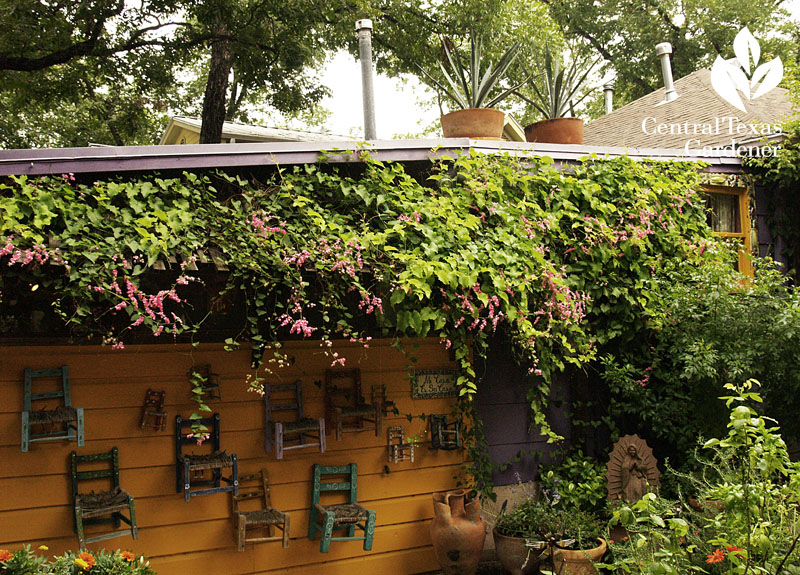
Lack of water, as in drought, fells our trees. Gardeners roll with the punches, though, like Jack Young in Bryan who turned his dead crape myrtle into a morning glory trellis. His granddaughters call it the flower tree!
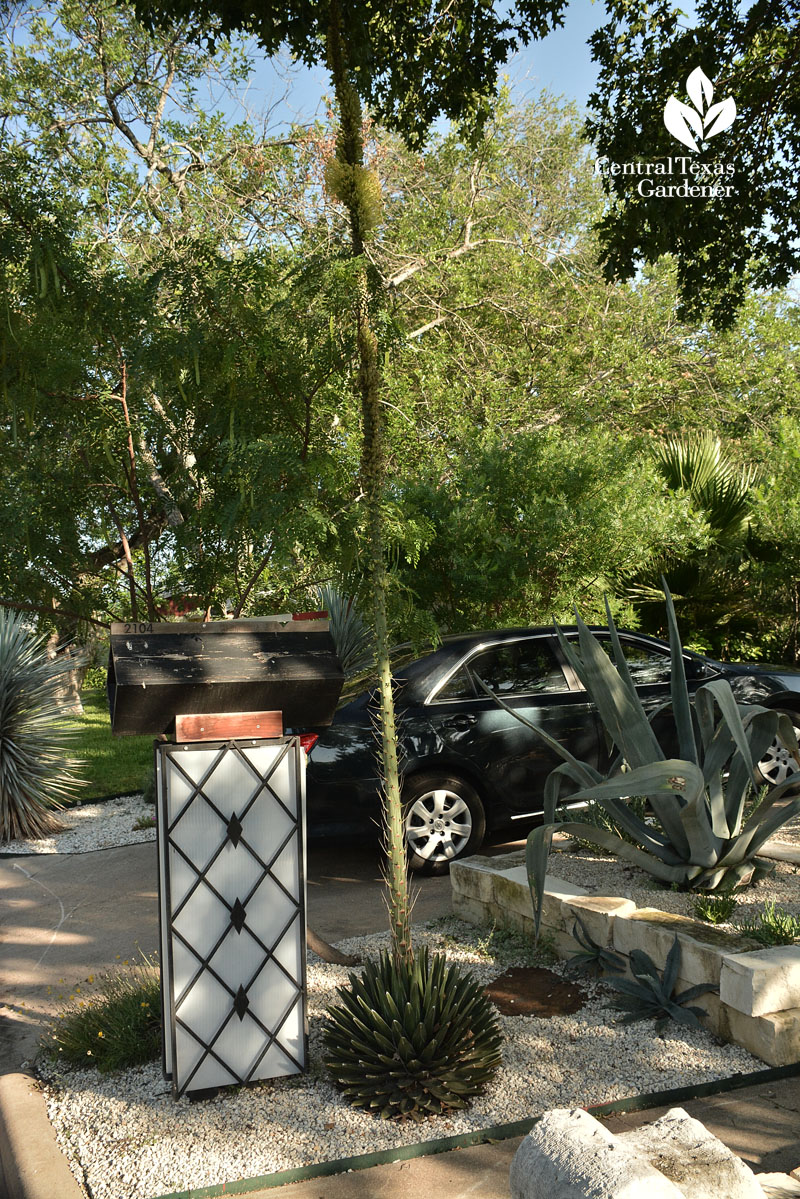
Morning glories clamor over Katherine Carrington’s Dallas crape myrtle that declined.
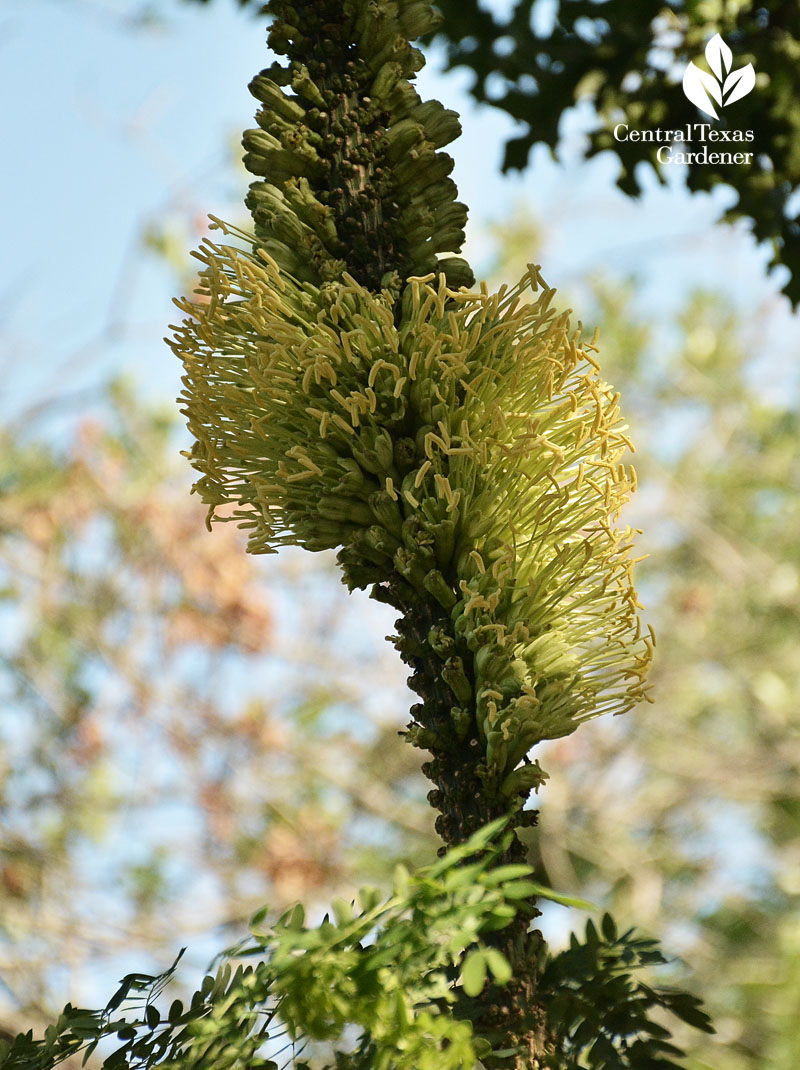
Native cypress vine joins it to feed bees and hummingbirds.

Personal note here: I met Katherine, a bank manager for Comerica, when my Dallas dad passed away last fall. By the time I reached her desk to deal with Dad’s account, I was physically and emotionally exhausted and actually shaking. Even in her professional efficiency, she quickly picked up on that (along with my gardening interest). While waiting for things to process, she pulled out her phone to show me this.
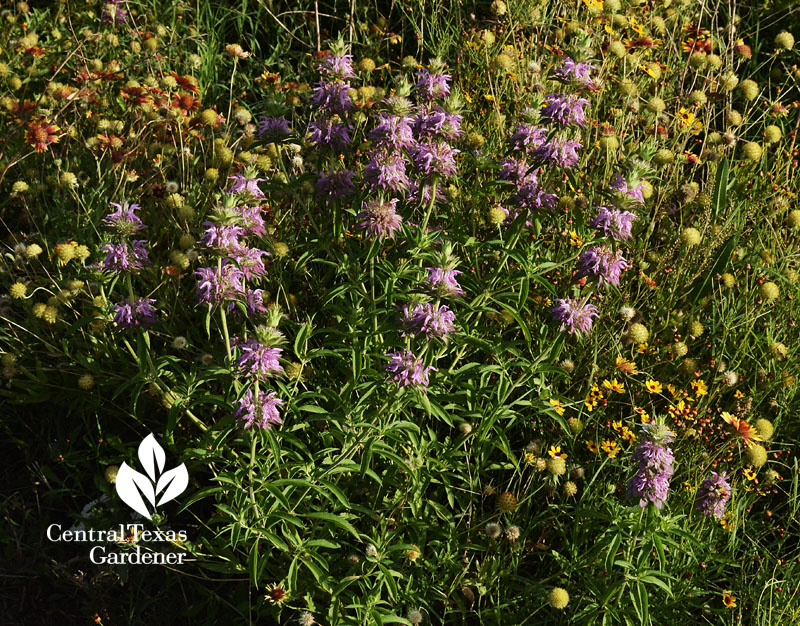
I’m not kidding: in 2 seconds I went from miserable to intrigued! As garden photographers, we love when we catch the light like that! But the big deal is how gardens—and kindness when we need it most—helps to heal. For sure, I’ll plant morning glories this spring!
So, we’ve all made those healthy eating New Year’s resolutions and vowed to eat more kale. Now what?
How about a Caesar salad with creamy non-dairy dressing and gluten free toasted chickpeas instead of croutons? Top with edible garden flowers for bit of extra punch.
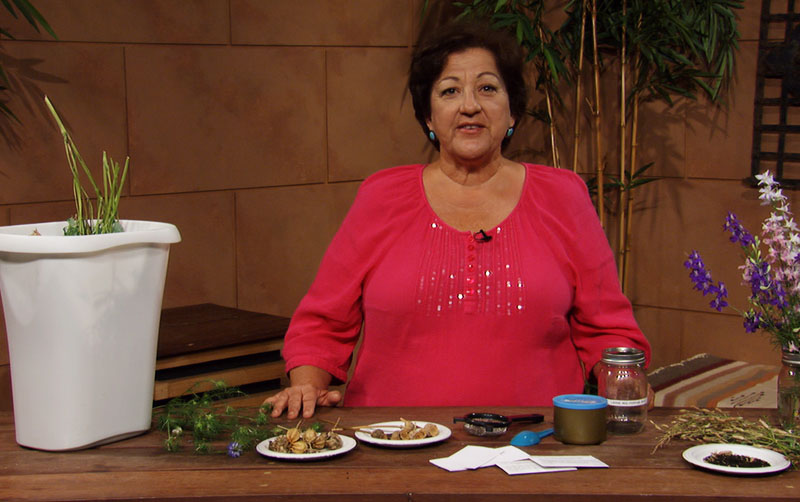
Lake Austin Spa Resort’s Executive Chef Stephane Beaucamp joins Trisha to put this tops on our recipes!
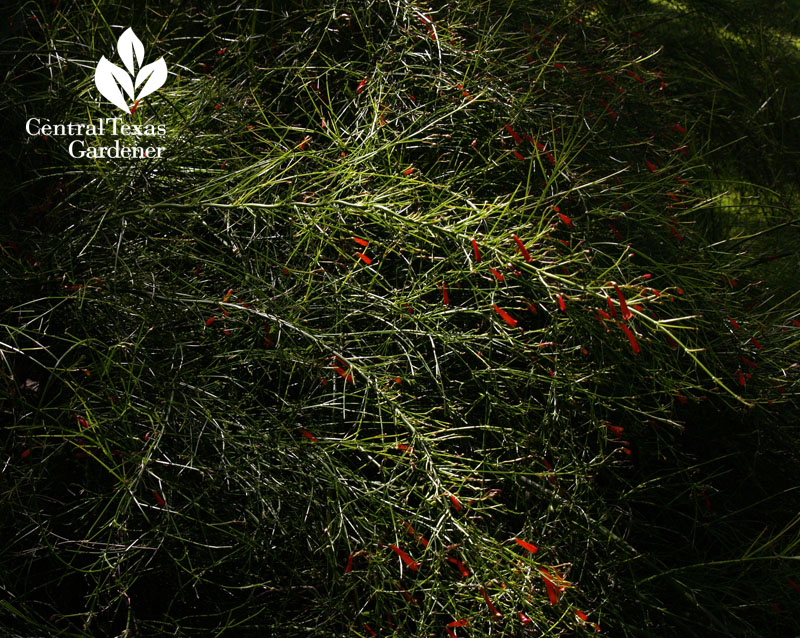
He shows how to strip and chiffonade kale plus whip together a nutritious (and yummy) dressing with flax seed meal and walnuts. Here’s the recipe.
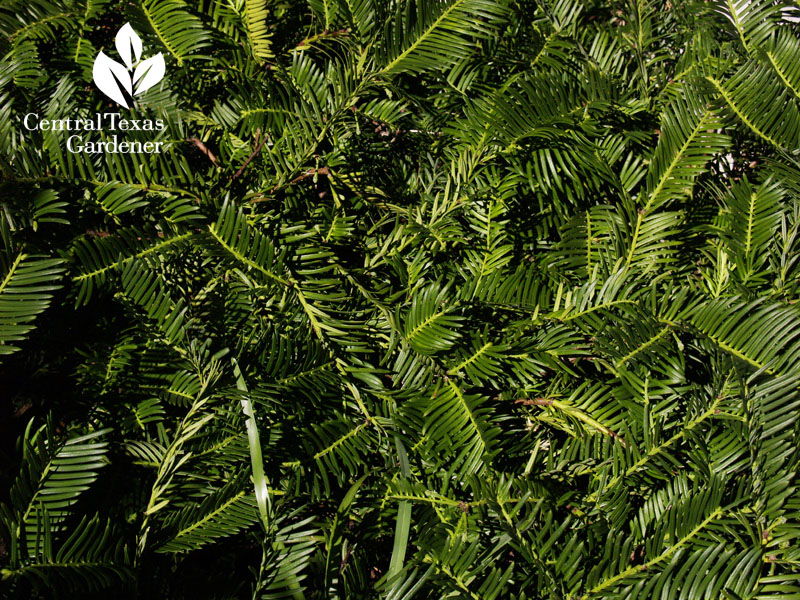
On tour in Temple, meet Sarah Munro who returned to her hometown to build a house with her dad on wild land she played on as a child. Rather than plant grass in the new development, she wanted to preserve the native wildlife’s habitat.
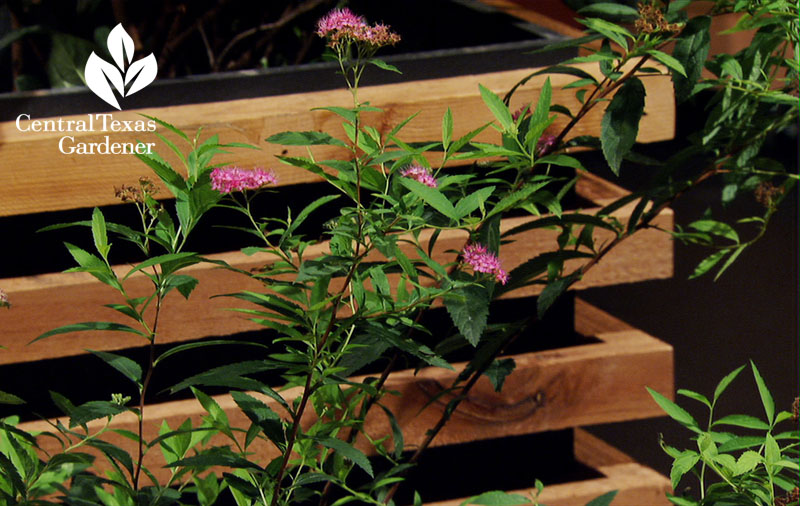
It’s a young garden and we taped when some perennials hadn’t recovered from a late freeze. But her first mission was to re-direct rainwater that swooped down the incline to the house.
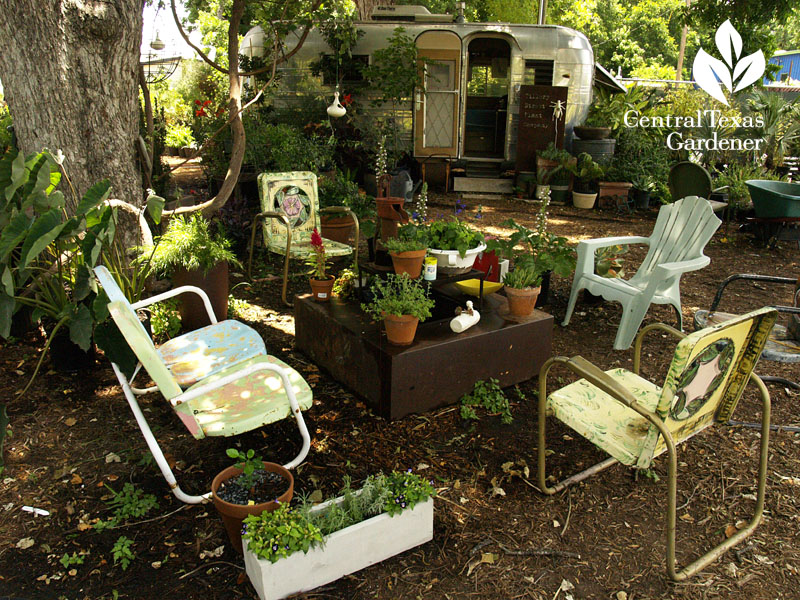
Working with artist Brooks Gist, he mapped out curving pervious paths lined with limestone blocks to channel water and let it slowly sink in.
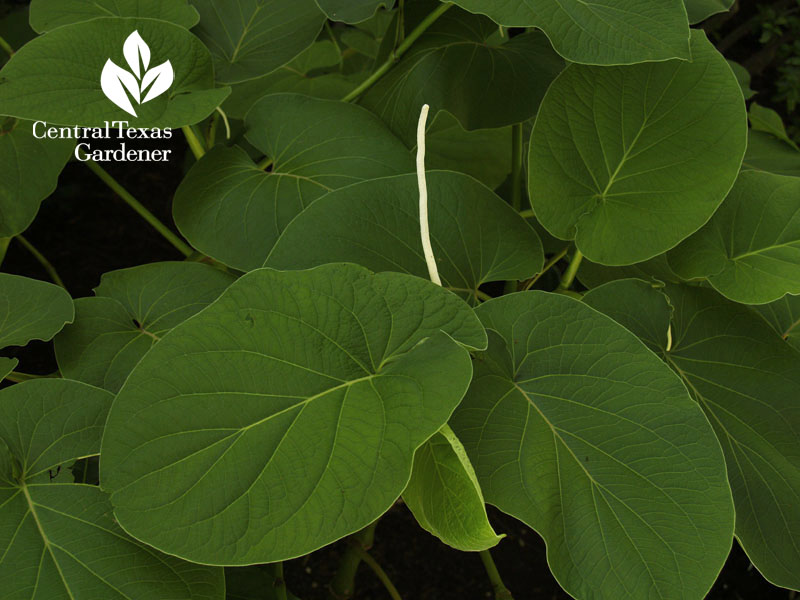
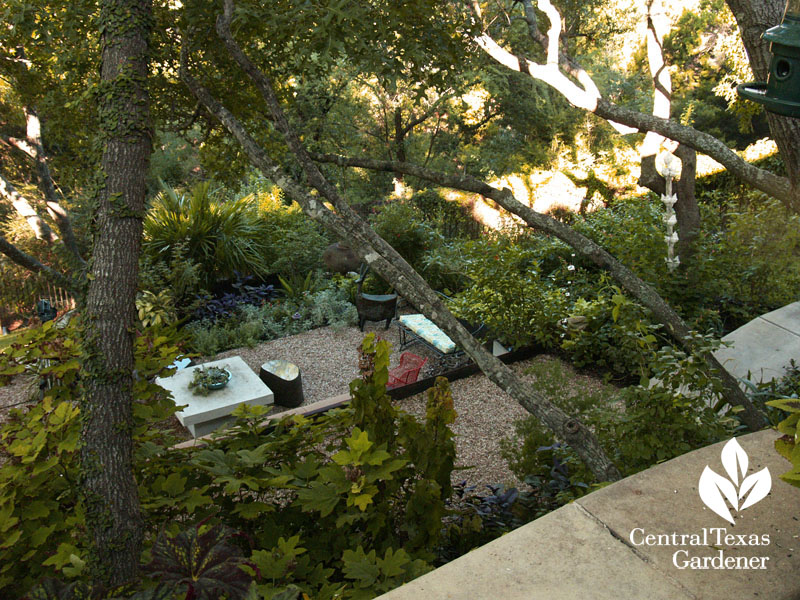
For vertical structure, Brooks designed trellises. This one sports native coral honeysuckle for pollinators and hummingbirds.
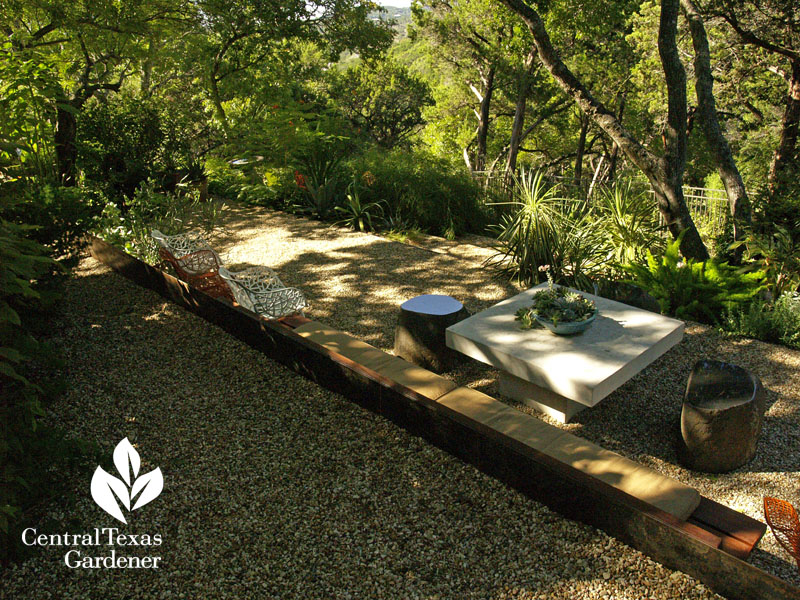
Along the fence, trellises support native crossvine and evergreen wisteria.
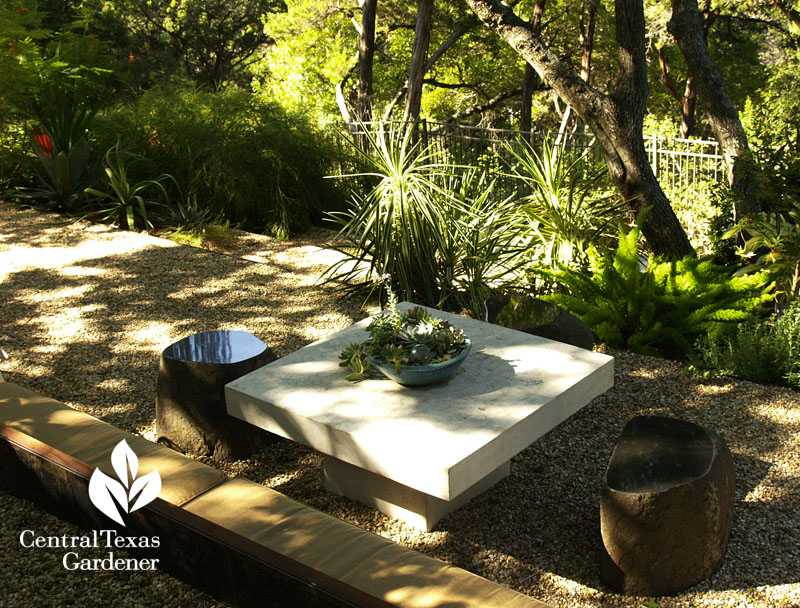
In the vegetable garden, vining crops grow up his recycled metal and ashe juniper structure.
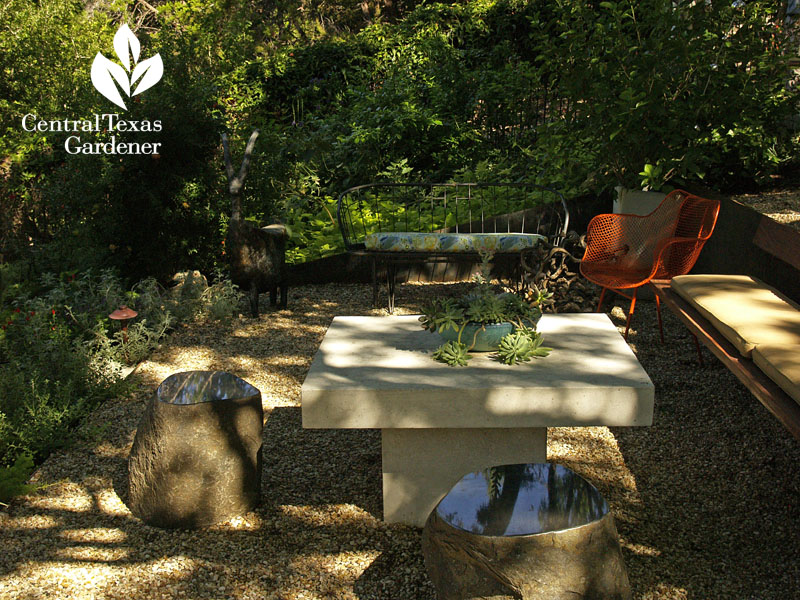
Again with recycles, he crafted the charming gate and fence. To the left, more ashe juniper hides the air conditioner. Beyond, note the shallow rain garden and collection barrel that trickles overflow into it.
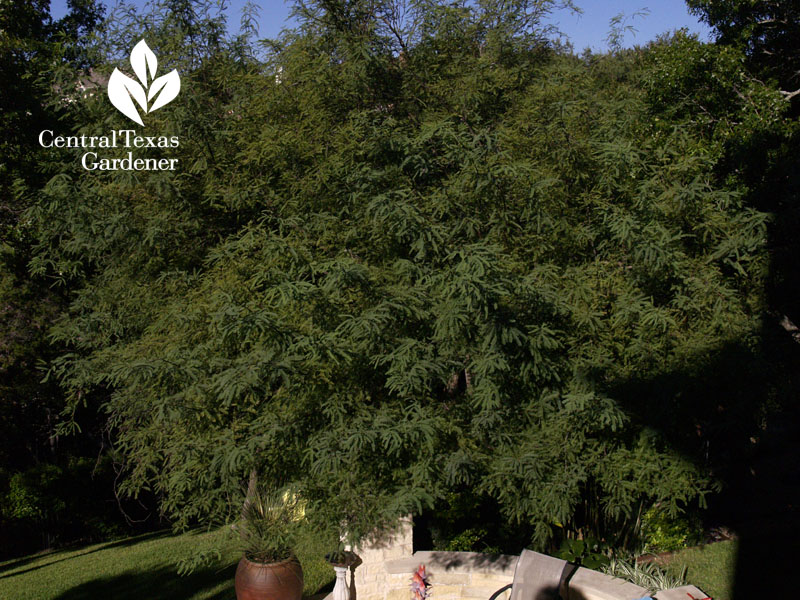
Sarah didn’t want to banish wildlife, like this Texas spiny lizard, when she moved into their territory.
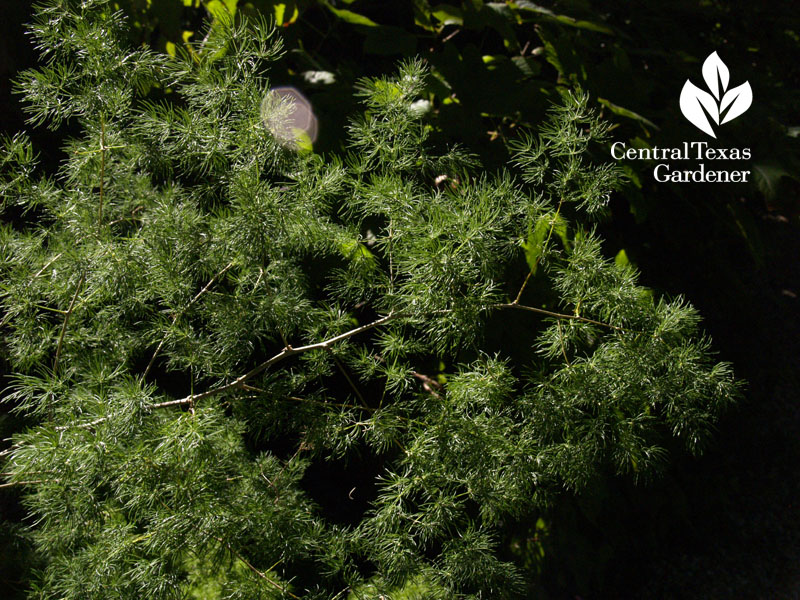
Instead, she’s actually pumped up wildlife diversity with a broader range of plants, drinking spots and cozy habitats. This tipi offers shelter to local possums below, lizards on its limbs, and birds at the top. And to boot, it hides a utility box!
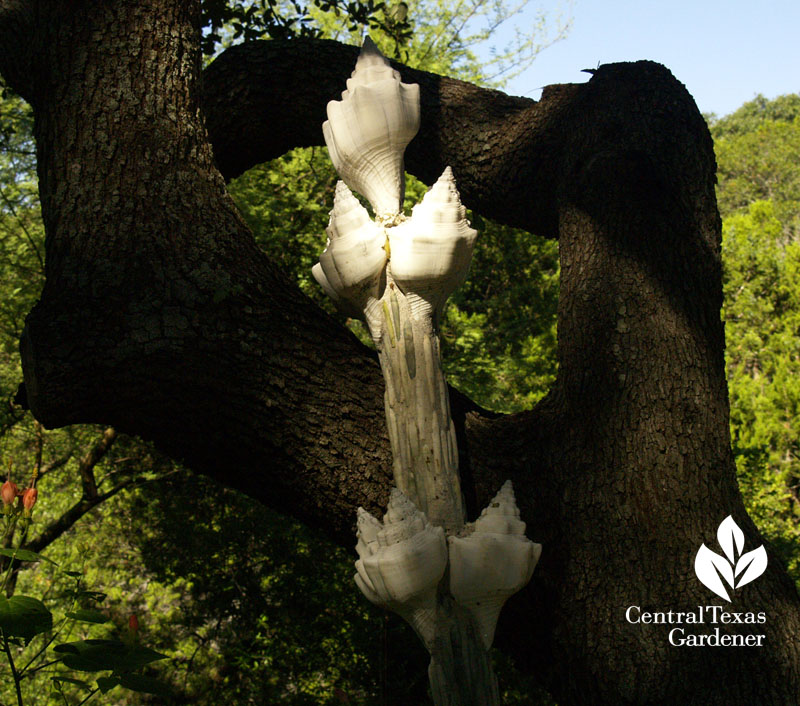
Sarah values art in all its forms: “I think art is what redeems us a species.” So, on a birthday, she commissioned this globe from Brooks’ brother, Aaron Gist. “I like the tension between more structural formal pieces or hard pieces against soft lines.”
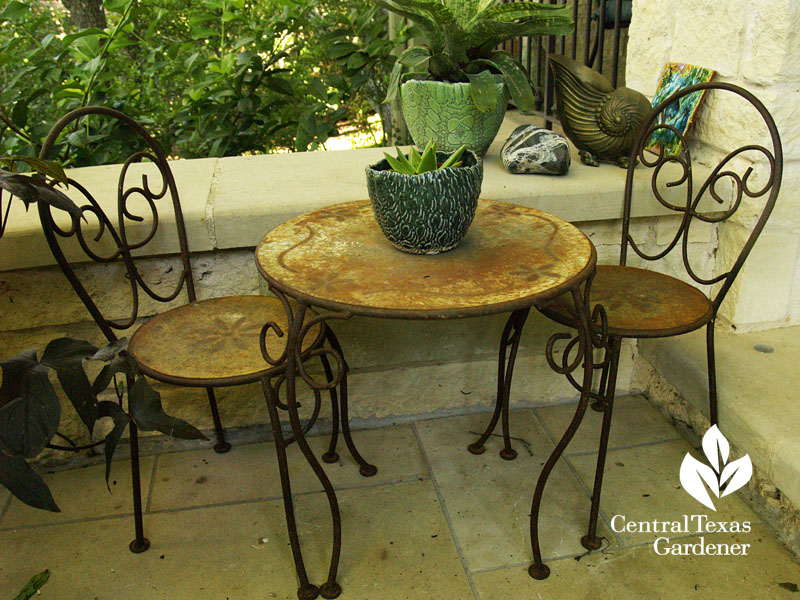
To celebrate Sarah’s process and philosophy in the land’s new birth, Brooks designed a fertility goddess in front, again from recycled materials.
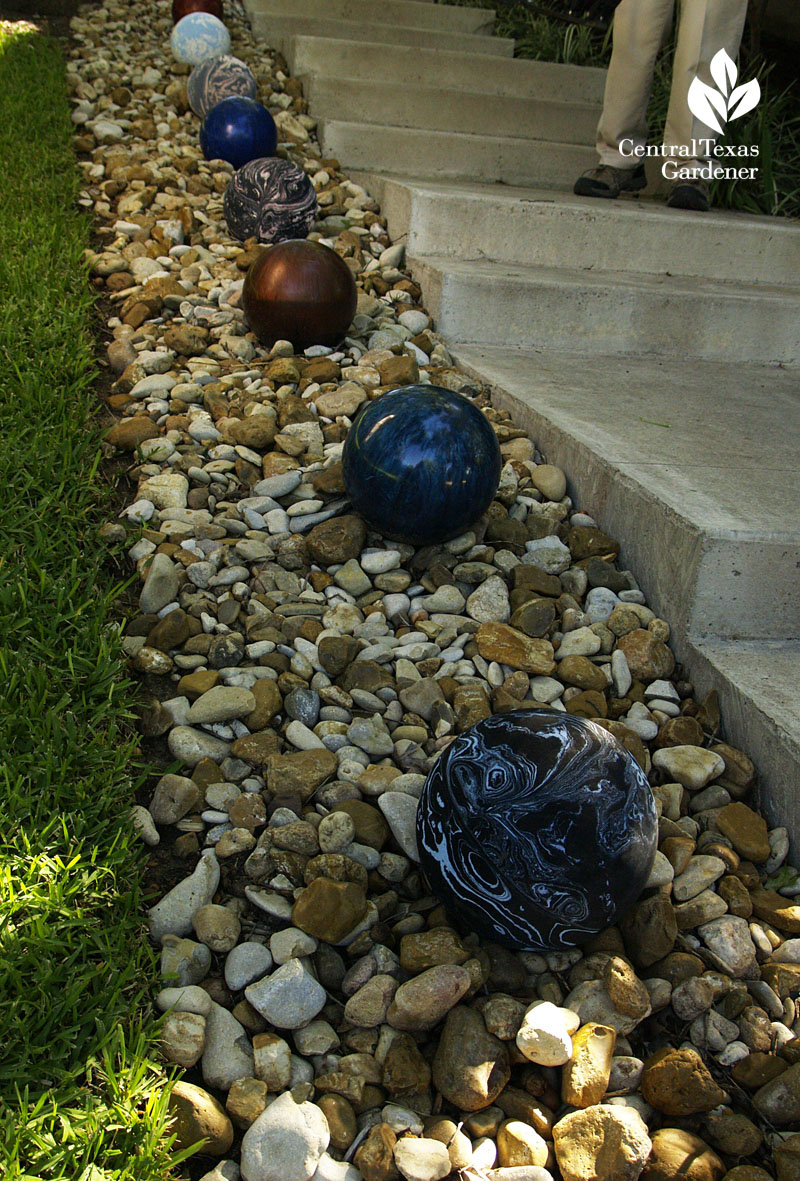
Watch their story now!
Thanks for stopping by and see you next week! Linda
tags:

